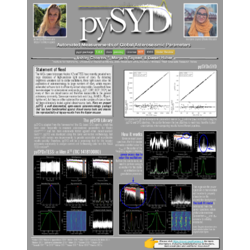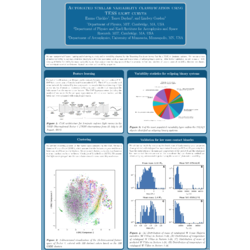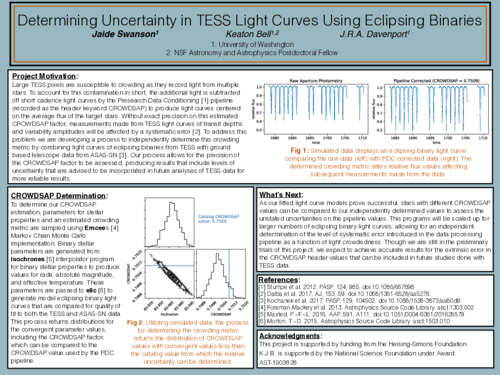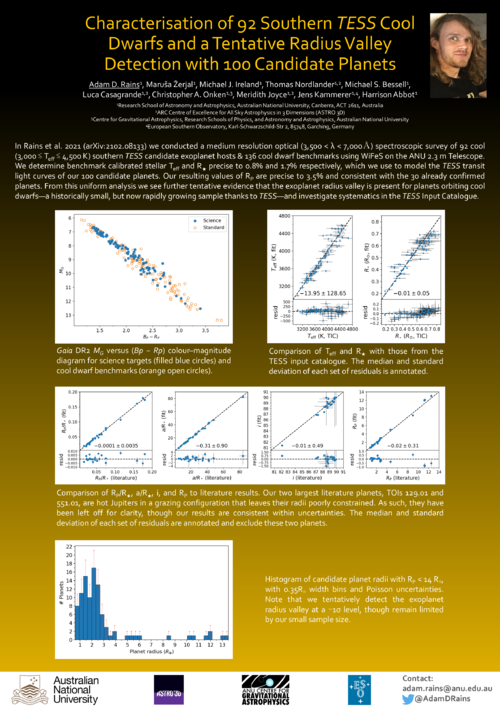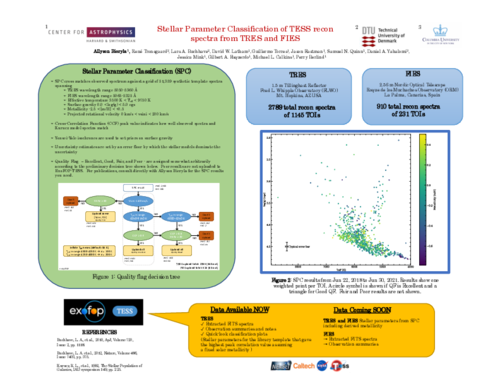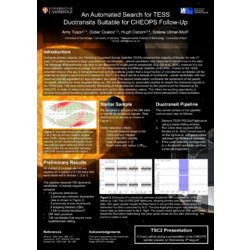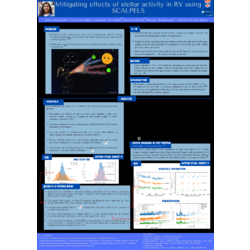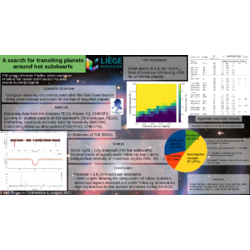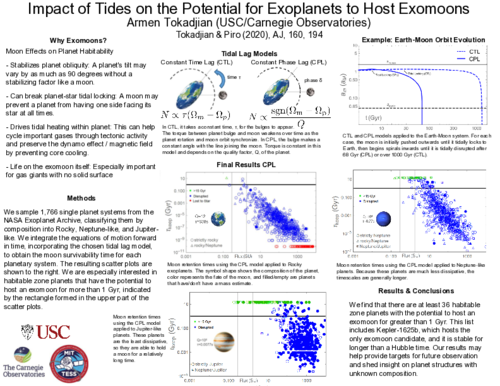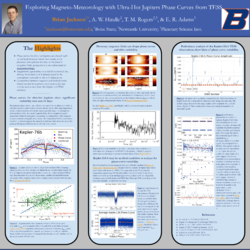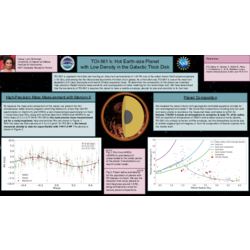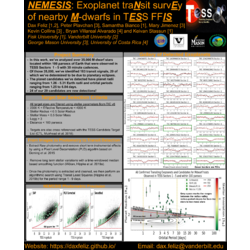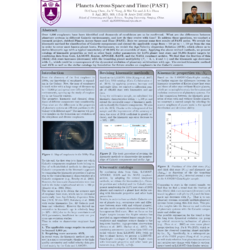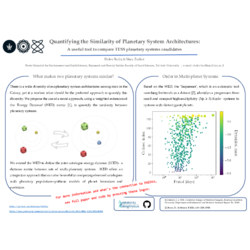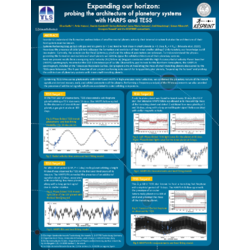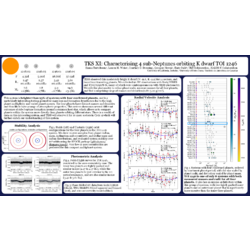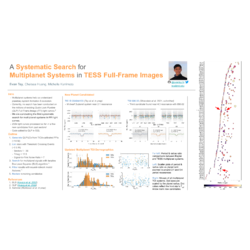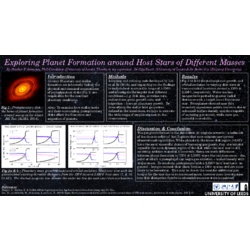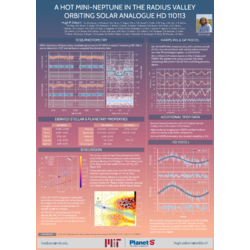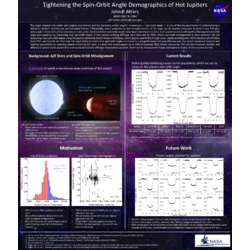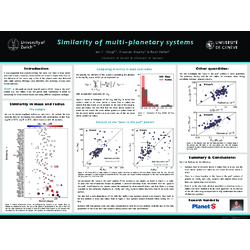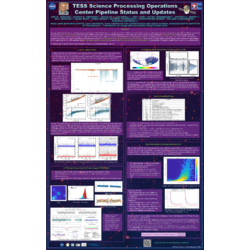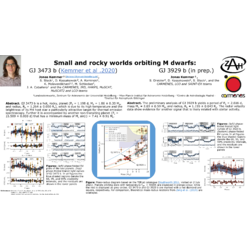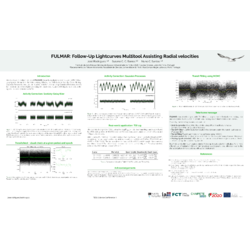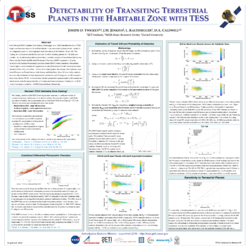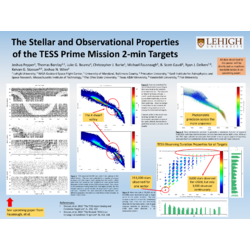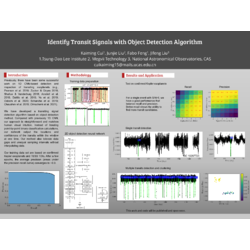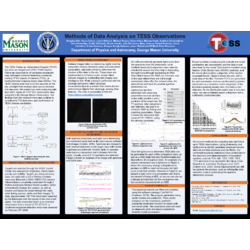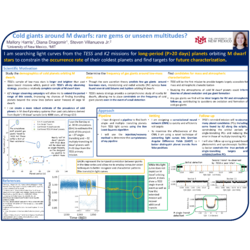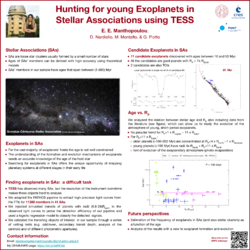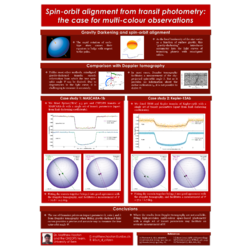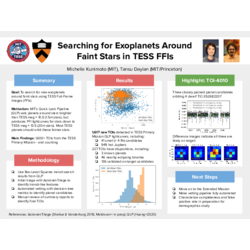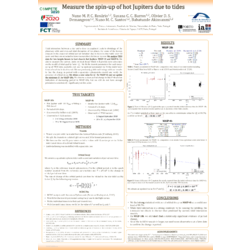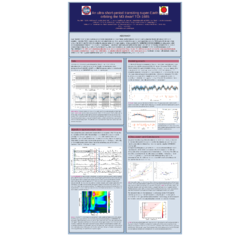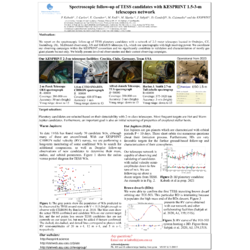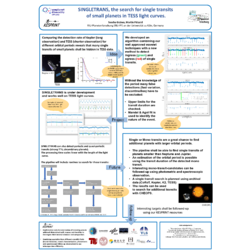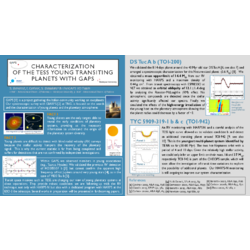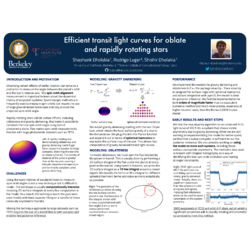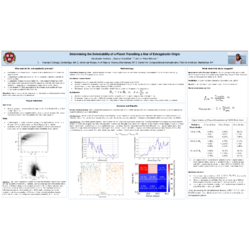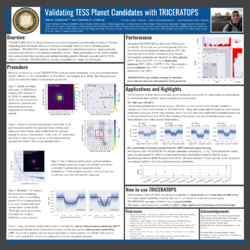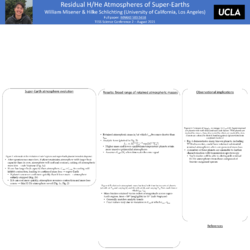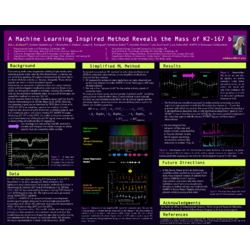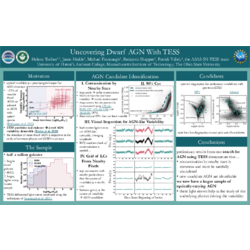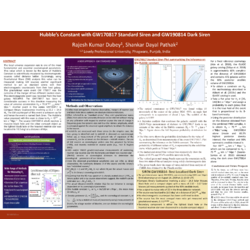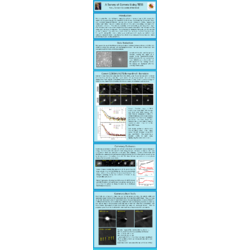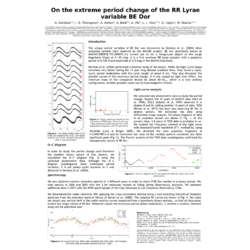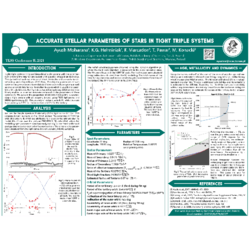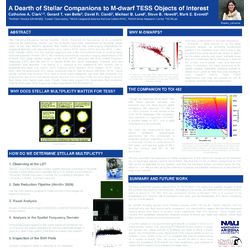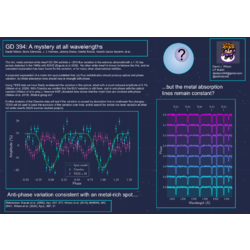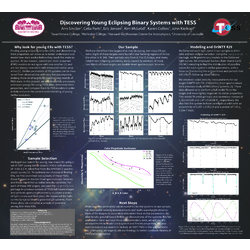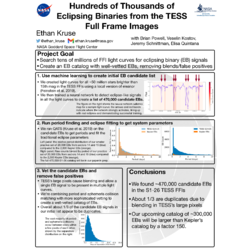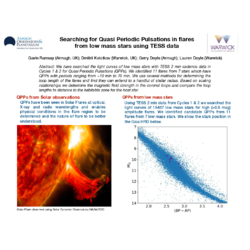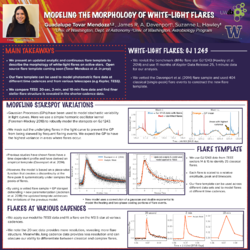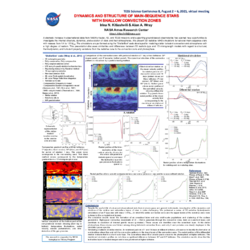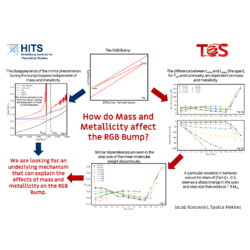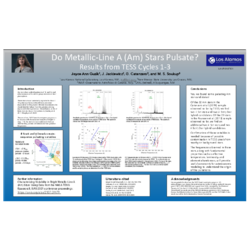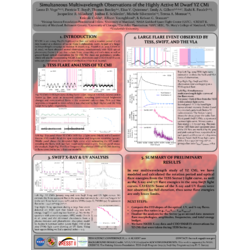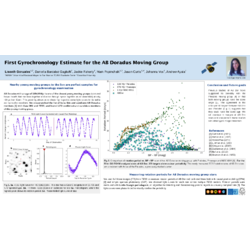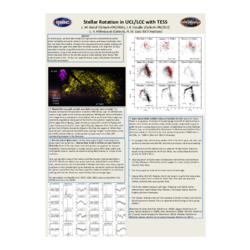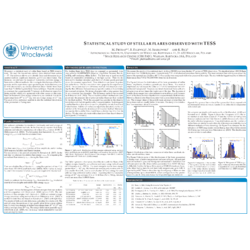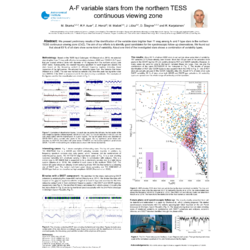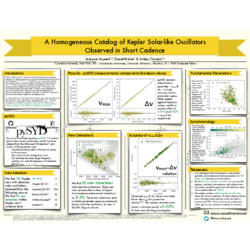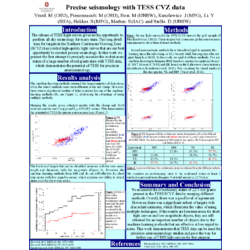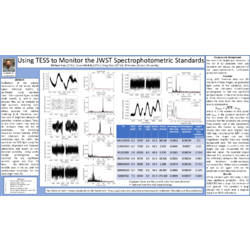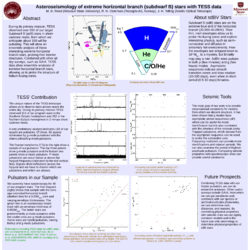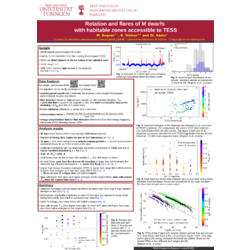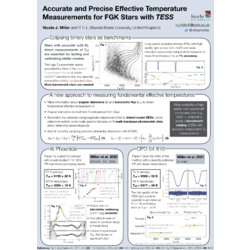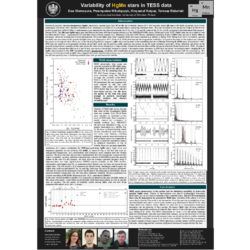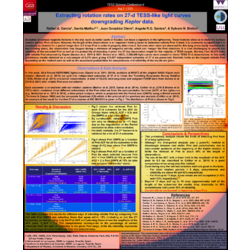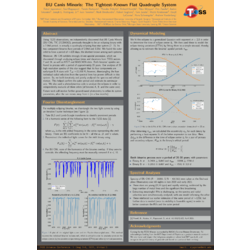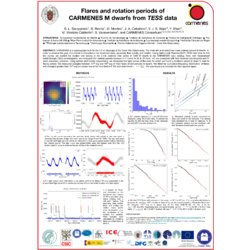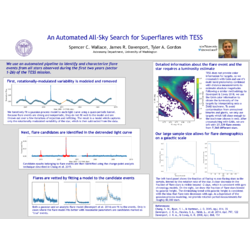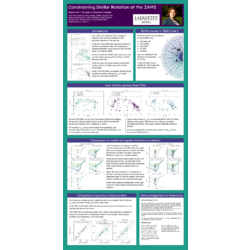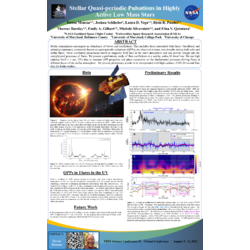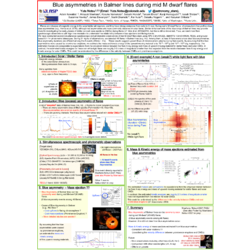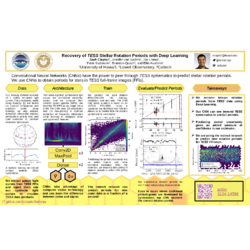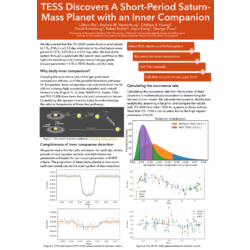TESS Science Conference II
Aug 2 - 6 2021, Online
- February 4th: Open abstract submission (Talks and posters, Splinter sessions)
- March 29: Open registration.
- April 2nd: Splinter session abstract deadline.
- April 30: Talks and posters abstract deadline.
- June 11: Announcement of decision on abstracts.
- July 1st: Registration deadline.
- July 10: Late posters abstract submission deadline.
- July 23: Posters upload deadline.
- August 1st: Virtual opening reception (19:00 - 21:00 UT, 15:00 - 17:00 EDT).
- August 2nd: The first day of the conference.
Posters
Posters will be viewed online using the following platforms:
Gather.Town
A virtual 2D environment ran on a web browser or a desktop app, using graphics that is reminiscent of 1990’s video games. In Gather.Town attendees walk around in the virtual environment using an avatar, and interact using audio and video with others whose avatar is nearby. This platform is quickly gaining popularity as it is easy to use and mimics well the real life experience of walking around and bumping into colleagues. This virtual environment will be available throughout the conference week, and there will be two dedicated virtual poster sessions. A brief introduction to Gather.Town is shown in this video.
To locate a poster in Gather.Town we assigned each poster a poster ID, composed of the Poster Hall (or room) it is located in on Gather.Town, among the nine poster halls, and the poster number (from 1 to 24) within that hall. For exmaple, poster ID 3.21 is located in Poster Hall 3, poster 21. The list of posters along with their ID is here.
The Gather.Town space includes a TOI Helpdesk (in the main room), where TOI team members will be available during poster sessions to answer any and all questions about TOIs.
Zenodo Collection
Posters will be entirely electronic and freely available online through Zenodo, an EU funded data and project repository. All submissions must therefore be made on Zenodo's webpage.
To facilitate accessibilty and
visibility, all contributions to the proceedings will indexed on
the ADS.
Briefly, all submissions are assigned a Digital
Object Identifier (DOI) number by Zenodo,
making contributions
citeable. Once all contributions are received, ADS will be
notified, they will scrape the Zenodo collection, and then ADS
will index each of the contributions as part of a larger volume
(Proceedings for TESS Science Conference II). To ensure that all entries
are properly indexed, it is vital that each contribution
include appropriate metadata. In the tutorial below, you'll be
instructed about which metadata to include in your submission.
Submission to
the arXiv is
optional. However, if you submit to the arXiv, you must make
sure to update the metadata in your Zenodo collection properly
so that it does not get listed twice in ADS.
Conference website
Posters will be listed on the conference website, which will include links to the poster on Zenodo, and/or, to a poster-looking website created by the authors. That website can host an interactive poster, e.g. have interactive figures. The organizers encourage poster presenters to take advantage of the opportunity of the conference being online to make interactive posters.
Submit your poster
For instructions on types of posters and how to submit your poster, please scroll to the bottom of the page.
Honorable Mention
The following posters received an Honorable Mention:
- Adina Feinstein - Disentangling Stellar Activity During a Transit of the 23 Myr Planet V1298 Tau c
- Emilie Simpson - Stellar Variability of Known Exoplanet Hosts Observed by TESS
- Jake Clark - How do Stellar Surveys Like GALAH Improve Our Understanding of Planetary Systems?
- Sam Christian - A Possible Population of Planetary Systems on Aligned Orbits with Visual Binary Companions
- Kaew Samaporn Tinyanont - Last Year Before Death: Observations of SN 2020fqv by TESS and Friends
- David Wilson - The mysteries of GD 394 explored with TESS
- Nicola Miller - Accurate and precise effective temperature measurements for FGK stars with TESS
- Teresa Monsue - Stellar Quasi-periodic Pulsations in Highly Active Low Mass Stars
- Zach Claytor - Recovery of TESS Rotation Periods Using Deep Learning
Interactive Posters

Adina Feinstein
Disentangling Stellar Activity During a Transit of the 23 Myr Planet V1298 Tau c
poster number: 1.14
interactive
zenodo
abstract

Georgina Dransfield
Rare Exoplanet Transits Observed from Antarctica
poster number: 3.08
interactive
zenodo
abstract
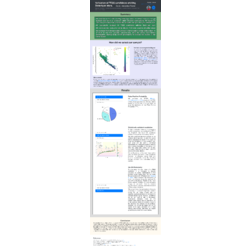
Giacomo Mantovan
Validation of TESS candidates orbiting Solar-type stars
poster number: 3.09
interactive
zenodo
abstract
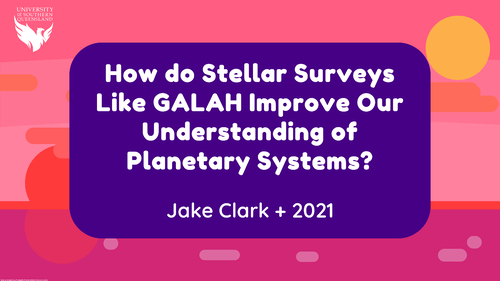
Jake Clark
How do Stellar Surveys Like GALAH Improve Our Understanding of Planetary Systems?
poster number: 3.16
interactive
zenodo
abstract

Mathilde Timmermans
The TRAPPIST and SPECULOOS contribution to TFOP Sub-Group 1
poster number: 4.19
interactive
zenodo
abstract

Melissa Janice Hobson
The WINE collaboration: Unveiling long-period planets with TESS
poster number: 5.01
interactive
zenodo
abstract

Priyanka Chaturvedi
TOI-1468: Two mini-Neptunes on two sides of the radius valley
poster number: 5.12
interactive
abstract
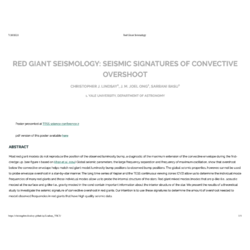
Christopher Lindsay
Seismic analysis of convective overshoot in red giants
poster number: 6.22
interactive
zenodo
abstract
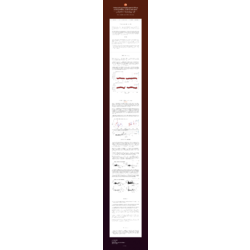
Pia Cortes-Zuleta
Stellar activity of the M-dwarf Gl205 as seen by SPIRou, SOPHIE, and TESS
poster number: 8.22
interactive
zenodo
abstract

Pragati Pradhan
Synergy between TESS and Chandra/HETG for multiwavelength flare studies of cool stars
poster number: 8.23
interactive
zenodo
abstract
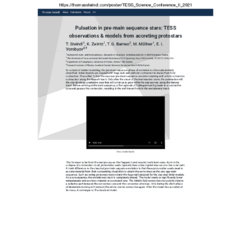
Thomas Steindl
Pulsation in pre-main sequence stars: TESS observations & models from accreting protostars
poster number: 9.14
interactive
zenodo
abstract
Posters

Aidan Van Duzer
Allesfitter in the Cloud: An All-in-One Classroom and Outreach Tool for Fitting TESS Data and More
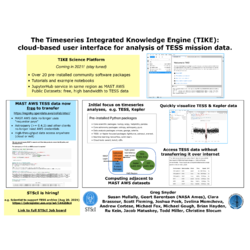
Gregory Snyder
The Timeseries Integrated Knowledge Engine (TIKE): cloud-based user interface for analysis of TESS mission data
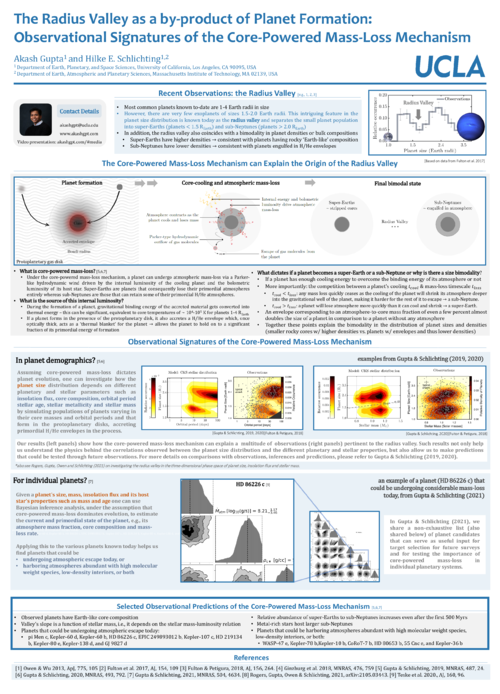
Akash Gupta
Understanding the Radius Valley as a by-product of Planet Formation: Observational Signatures of the Core-Powered Mass-Loss Mechanism

Alexander James Mustill
Hot Jupiters, Cold Kinematics: Links between planetary systems and the host star's Galactic properties
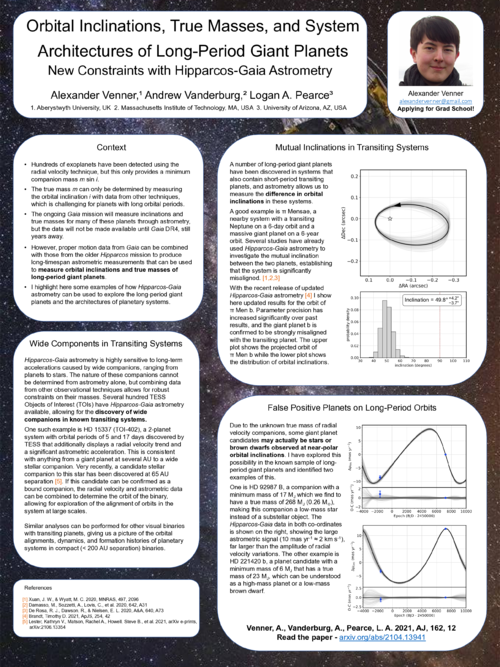
Alexander Venner
Orbital Inclinations, True Masses, and System Architectures of Long-Period Giant Planets: New Constraints with Hipparcos-Gaia Astrometry
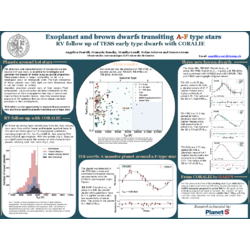
Angelica Psaridi
Radial velocity follow-up of TESS exoplanet and brown dwarf candidates orbiting A-F type stars

Ankita Waghmare
Investigating the impact of space weather on the habitability of exoplanet around M-dwarf star as a case study using TESS observations
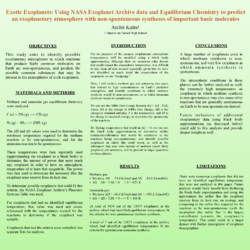
Archit Kalra
Exotic Exoplanets: Using NASA Exoplanet Archive data and Equilibrium Chemistry to predict an exoplanetary atmosphere with non-spontaneous formation of important basic molecules
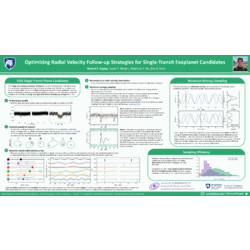
Arvind Gupta
Optimizing Radial Velocity Follow-up Strategies for Single-Transit Exoplanet Candidates

Avi Shporer
LCO Key Project: Standing on the shoulders of the network - Follow-up of TESS planet candidates with LCO
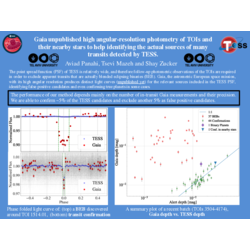
Aviad Panahi
Gaia TESS Collaboration - Gaia unpublished high angular resolution photometry of TOIs and their nearby stars to help identifying the source of many transits detected by TESS
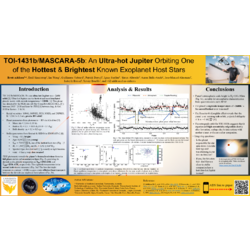
Brett Addison
TOI-1431b/MASCARA-5b: An Ultra-hot Jupiter Orbiting One of the Hottest & Brightest Known Exoplanet Host Stars

Daniel Revilla Martínez de Albéniz
Rotational periods and planetary angular momenta of CARMENES GTO stars with TESS data
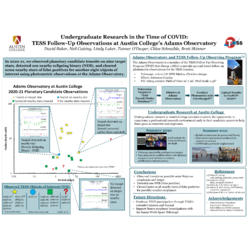
David Baker
Undergraduate Research in the Time of COVID: TESS Follow-Up Observations at Austin College’s Adams Observatory
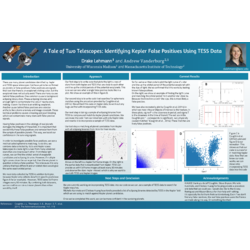
Drake Lehmann
A Tale of Two Telescopes: Verifying or invalidating planet candidates by combining TESS and Kepler data
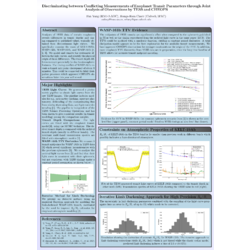
Fan Yang
Discriminating between conflicting measurements of exoplanet transit depths through joint analysis of observations by TESS and CHEOPS

Gabriel de Oliveira Gomes
Influence of equilibrium tides on the transit-timing variations of exoplanets
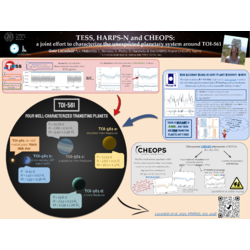
Gaia Lacedelli
TESS, HARPS-N and CHEOPS: a joint effort to characterize the unexpected planetary system around TOI-561
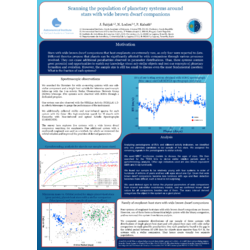
Jan Subjak
Scanning the population of planetary systems around stars with wide brown dwarf companions
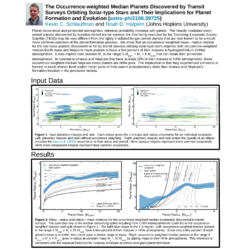
Kevin C. Schlaufman
The Occurrence-weighted Median Planets Discovered by Transit Surveys Orbiting Solar-type Stars and Their Implications for Planet Formation and Evolution

Lorena Acuña
Characterising the interior structures and atmospheres of super-Earths and sub-Neptunes with TESS, K2 and Spitzer data.
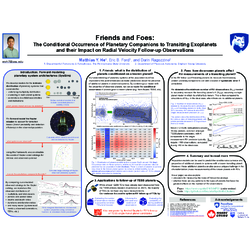
Matthias Yang He
Friends and Foes: Conditional Occurrence Rates of Exoplanet Companions and Implications for Radial Velocity Follow-up Observations
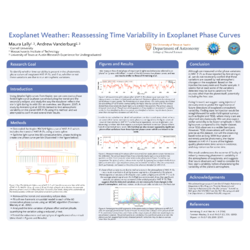
Maura Lally
Reassessing the Evidence for Time Variability in the Atmosphere of the Exoplanet HAT-P-7 b
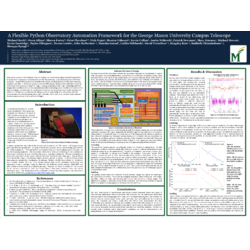
Michael Anthony Reefe
A Flexible Python Observatory Automation Framework for the George Mason University Campus Telescope
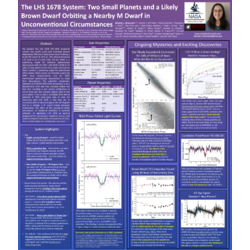
Michele Silverstein
The LHS 1678 System: Two Small Planets and a Likely Brown Dwarf Orbiting a Nearby M Dwarf in Unconventional Circumstances
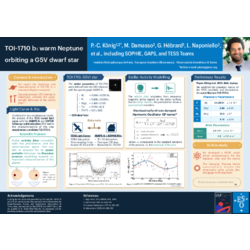
Pierre-Cécil König
Detection of TOI-1710b: a transiting Neptune-like exoplanet discovered by HARPS-N and SOPHIE
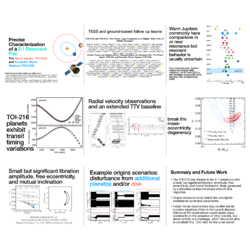
Rebekah Dawson
Precise Transit and Radial-velocity Characterization of a Resonant Pair: The Warm Jupiter TOI-216c and Eccentric Warm Neptune TOI-216b
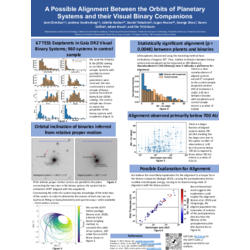
Sam Christian
A Possible Population of Planetary Systems on Aligned Orbits with Visual Binary Companions
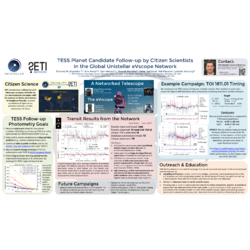
Thomas M. Esposito
TESS Planet Candidate Follow-up by Citizen Scientists in the Global Unistellar eVscope Network

Vineet Kumar Mannaday
Revisiting the Transit Timing Variation of Extra-solar Planets TrES- 3b and Qatar-1b with TESS data
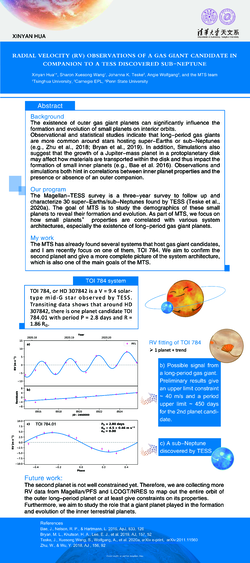
Xinyan Hua
Radial Velocity Observations of a Gas Giant Candidate in Companion to a TESS Discovered sub-Neptune

Qinan Wang
Detectability of early flux excess in high cadence light curves of SNe Ia from Kepler and TESS
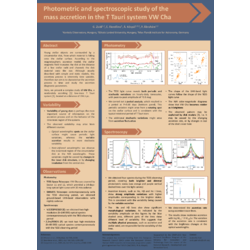
Gabriella Zsidi
Photometric and spectroscopic study of the mass accretion in the T Tauri system VW Cha
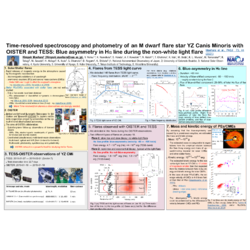
Hiroyuki Maehara
Time-resolved spectroscopy and photometry of an M dwarf flare star YZ Canis Minoris with OISTER and TESS: Blue asymmetry in H-alpha line during the non-white light flare
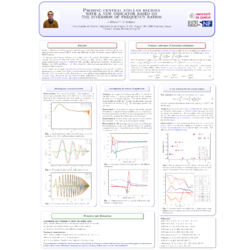
Jérôme Bétrisey
Probing central stellar regions with a new indicator based on the inversion of frequencies ratios

Jonathan Labadie-Bartz
TESS photometry of classical Be stars: rapid rotation, pulsation, and links to mass ejection
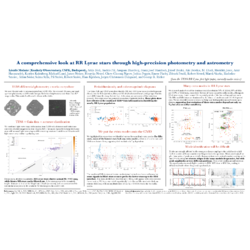
László Molnár
A comprehensive look at RR Lyrae stars through high-precision photometry and astrometry
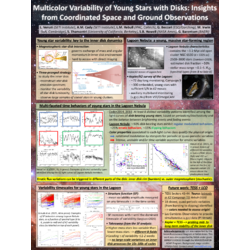
Laura Venuti
Multicolor variability of young stars with disks: insights from coordinated space and ground observations
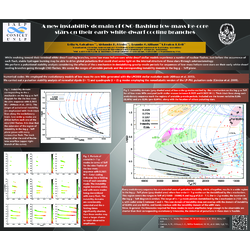
Leila M Calcaferro
A new instability domain of CNO-flashing low-mass He-core stars on their early white-dwarf cooling branches
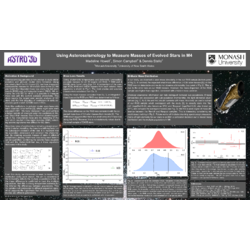
Madeline Howell
Using Asteroseismology to Measure Masses of Evolved Stars in M4 to Study Stellar Evolution and Globular Cluster Formation
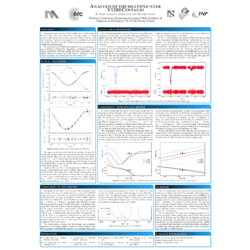
MARCADON Frédéric
Analysis of eclipsing binaries in multiple stellar systems: the case of V1200 Centauri
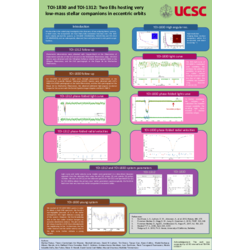
Markus Rabus
TOI-1830 and TOI-1312: Two EBs with metal-poor stars hosting very low-mass stellar companions in eccentric orbits
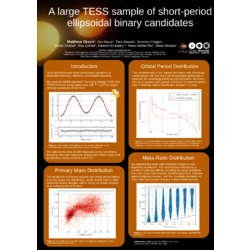
Matthew Green
A large TESS sample of short-period ellipsoidal binary candidates: implications for the binary and compact-object populations

Natascha Barac
Revisiting Bright δ Scuti Stars and their Period-Luminosity Relation with TESS and Gaia EDR3
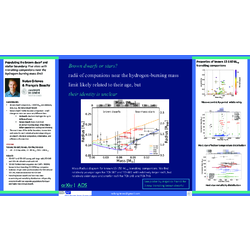
Nolan Grieves
Examining the brown dwarf and low-mass star boundary with five transiting companions detected by TESS
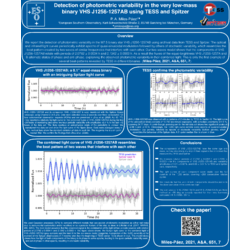
Paulo Miles-Páez
Detection of photometric variability in the very low-mass binary VHS J1256-1257AB using TESS and Spitzer

Ryohei Hosokawa
The correlation of X-ray binaries between X-ray and Optical light with MAXI and TESS

Siemen Burssens
Exploitation of a TESS OB asteroseismic sample: constraints on internal rotation and mixing in the high-mass pulsator HD192575.
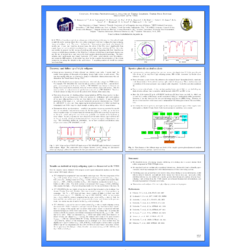
Tamás Borkovits
Complex, Spectro-Photodynamical Analyes of Triply Eclipsing Triple Star Systems Discovered with TESS
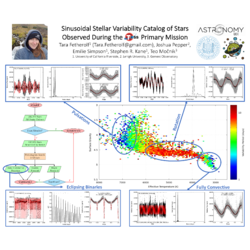
Tara Fetherolf
Sinusoidal Stellar Variability Catalog of Stars Observed During the TESS Primary Mission

Tiago Campante
Asteroseismology of red-giant host stars: The paradigmatic cases of KOI-3886 and iota Draconis
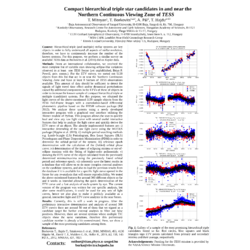
Tibor Mitnyan
Compact hierarchical triple star candidates in and near the Northern Continuous Viewing Zone of TESS
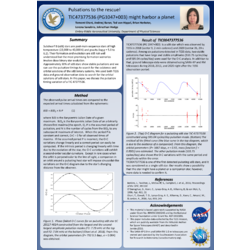
Tomomi Otani
Searching for long period subdwarf B systems and single subdwarf B stars using TESS data
Types of contributions
Posters
You may upload up to three files with a poster. One file is your poster as pdf. Optionally you can include a second file of type png or jpeg, which we will use as thumbnail on the website; look at Cool Stars 20.5 posters for examples.
The third type of file is an (optional) video recording of you presenting your poster. This video should not exceed 5 minutes, and should be posted in a standard format. The TSC2 team will not edit any videos; we may contact you if your video is too long or in some other way inappropriate so that you may upload a new version.
Interactive Posters
We encourage people to experiment with interactive posters (e.g. interactive figures on a website). Some examples can be found on the Cool Stars 20.5 conference website. If you want to make an interactive poster, contact tsc2@mit.edu and provide the organizers the URL of your poster. We don't have hard and fast rules on how to do interactive posters. Our feeling is that we, as a community, need to find better ways for posters in remote conferences. We may have more remote meetings even after the pandemic is over to reduce cost, greenhouse gases, and for easier access for astronomers from countries or institutions that don't have the travel budget to fly to a different continent for a few days of meeting. At the same time, we can't accept hundreds of remote talks, because nobody wants to listen to Zoom that long.
When making an interactive poster, you are welcome to upload to Zenodo a pdf version of your poster, which can be as simple as a screenshot of your interactive poster. Make sure it includes the URL of the interactive poster.
So, we encourage attendees to think about what might work for remote / interactive poster-like content beyond the usual static pdf. If you want to present interactive work or have other ideas or feedback, contact tsc2@mit.edu.
How to submit your contribution
Submitting to Zenodo is rather simple, but it's important that all metadata be properly included so that articles get properly indexed on ADS. Below is a series of screenshots taking you through the submission process from start to finish.
Step 01: Follow the link
to the submission page for TESS Science Conference II.
Step 02: You'll be presented with a login screen:

If you have a Zenodo account, proceed to login. If you do not, you may login using your GitHub or ORCID account, or you may create a new account using the "Sign Up" button located at the bottom of the frame.
Step 03: Once you login, you'll be presented with an "Upload" screen:

Click the button to choose a
file on your local machine, or drag and drop a file
directly onto the screen.
Step 04: After you select one or more files where you will be
able to fill out a wide variety of file metadata on the
boxes below the upload box. Be sure that in
the "Communities" box you see "TESS Science Conference II". If you do not see this,
start typing it into the search bar and it
will automatically pop up.

Step 05: Now, start filling out information about your document. First, select the type of file you have just uploaded:
- Poster: Upload 1-3 files and select "poster". One file is your poster as pdf. A second (optional) file (type png or jpeg) will used as a thumbnail on the website; we will use a small version of your pdf if none is provided. The third (optional) file is a video (type .mov or other standard format) recording of you presenting your poster, not to exceed 5 minutes in length; we will NOT edit these videos, but we may reject overlong/inappropriate content.
Enter the name of each author and their affiliation. NOTE names should be formatted as "Last Name, First Name".

You will be asked to fix this if you do not do it correctly the first time.
It's important for ADS that this be done properly. Continue to fill in the requested
information, including the Description (i.e., Abstract).
Step 06: Fill in keywords. You can have as many keywords as you like, but the first keyword should be one from the following list because we will sort posters by the value in the first keyword. Any poster that does not match one of the major science topics below will be listed as "other".
- Solar System
- Exoplanets
- Stellar Astrophysics
- Galactic Astrophysics
- Extragalactic Astrophysics
- Data Analysis Techniques

Step 07: Choose access rights and a license for your work. You are strongly encouraged to select Open Access and a permissive license so that people can easily access your work.

Step 08-a: Optionally, you may specify funding information.
Step 08-b: If you submitted to the arXiv and/or your article was already indexed to ADS, add the related identifying information so that Zenodo and ADS will link all of the contributions into one neat little package.

Step 09: Open the "Contributors" section by clicking on it. Add "Adams, Elisabeth R" as an editor. Again, note that the name must be "Adams, Elisabeth R". Select Editor from the dropdown menu.

Step 10: Given credit where credit is due! If you referenced various works in your article, talk, or poster, give them credit by adding the reference information (yes, citations will be counted on ADS, but ADS will only know about them if you enter the information in the "References" section). See the image below about how to format the references:

This is basically a copy-paste of a bibliography.
Step 11: Fill out information about the Workshop as shown below:
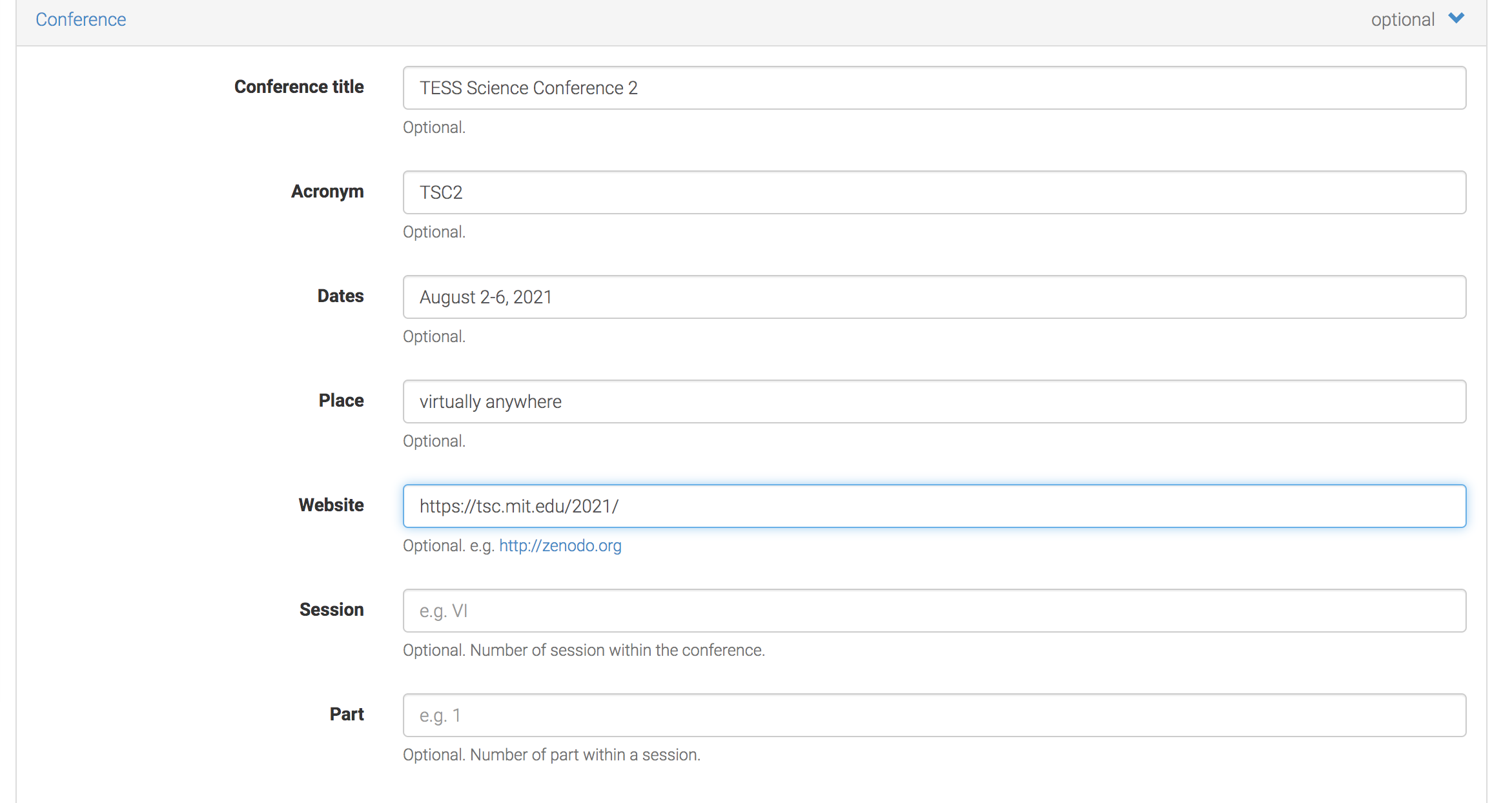
Step 12: Review the information to make sure you've done everything properly and then click "Publish"! Or, if you'd like to save it and publish later, click "Save"

Step DONE: Congratulate yourself on a job well done.
Acknowledgment
Thanks to the CS20.5 team that provided very detailed instructions , which we adapted here for TSC2.
